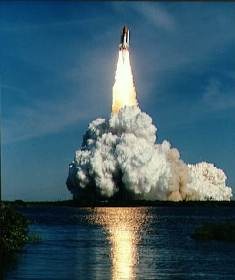| unmigratedcomposition-wiki-markupsetup |
|---|
| HTML Table | |||||||||||||||||||||||||||||||||||||||||||||||||||||||||||||||||||||||||||||||||||||||||||||||||||||||||||||||||||||||||||||||||||||||||||||||||||||||||||||||||||||||||||||||||||||||||||||||||||||||||||||||||||
|---|---|---|---|---|---|---|---|---|---|---|---|---|---|---|---|---|---|---|---|---|---|---|---|---|---|---|---|---|---|---|---|---|---|---|---|---|---|---|---|---|---|---|---|---|---|---|---|---|---|---|---|---|---|---|---|---|---|---|---|---|---|---|---|---|---|---|---|---|---|---|---|---|---|---|---|---|---|---|---|---|---|---|---|---|---|---|---|---|---|---|---|---|---|---|---|---|---|---|---|---|---|---|---|---|---|---|---|---|---|---|---|---|---|---|---|---|---|---|---|---|---|---|---|---|---|---|---|---|---|---|---|---|---|---|---|---|---|---|---|---|---|---|---|---|---|---|---|---|---|---|---|---|---|---|---|---|---|---|---|---|---|---|---|---|---|---|---|---|---|---|---|---|---|---|---|---|---|---|---|---|---|---|---|---|---|---|---|---|---|---|---|---|---|---|---|---|---|---|---|---|---|---|---|---|---|---|---|---|---|---|---|
| |||||||||||||||||||||||||||||||||||||||||||||||||||||||||||||||||||||||||||||||||||||||||||||||||||||||||||||||||||||||||||||||||||||||||||||||||||||||||||||||||||||||||||||||||||||||||||||||||||||||||||||||||||
h2. Description
{table:align=right|cellspacing=0|cellpadding=1|border=1|frame=box|width=40%}
{tr}
{td:align=center|bgcolor=#F2F2F2}*[Model Hierarchy]*
{td}
{tr}
{tr}
{td}
{pagetree:root=Model Hierarchy|reverse=true}
{td}
{tr}
{table}
|| Page Contents ||
| {toc:style=none|indent=10px} |
----
h2. Assumed Knowledge
h4. Prior Models
* [Point Particle Dynamics]
h4. Vocabulary
* [system]
* [force]
* [impulse]
* [momentum]
* [velocity]
----
h2. Keys to Applicability
This model is [generally applicable|generally applicable model] (assuming knowledge of the external forces and system constituents), but is especially useful when:
* describing the momentum of systems where external forces are absent (system momentum will be constant).
* estimating the force in a process that occurs in a very short time interval as in collisions (impulse will be easier to determine than force).
{info}"Very short" is a relative expression. In collisions, we generally use the conservation of the system's momentum to yield information about the _change_ in momentum of the _individual system constituents_. A "very short" collision in that context is one in which the internal forces produce an impulse on the constituent of interest that is so much larger than the impulse from external forces that the external forces can be neglected. Of course, that is a relative criterion as well, and will depend on the desired accuracy of the calculation.{info}
----
h2. Model Specification
h4. System Structure
*[Constituents|system constituent]:* System is composed of [Point particles|point particle].
{note}Rigid bodies may be treated as point particles with positions specified by the center of mass positions of the rigid bodies when this model is used.{note}
\\
*[Interactions|force]:* Only [external forces|external force] need be considered, since [internal forces|internal force] do not change the system's momentum.
\\
h4. Descriptors
*[Object Variables|object variable]:* None.
{note}This model does not require that constituent masses be constant. Thus, mass is a state variable for this model.{note}
*[State Variables|state variable]:* Mass (_m{_}{^}j^) and velocity (_v{_}{^}j^) for each object or momentum (_p{_}{^}j^) for each object inside the system.
*[Interaction Variables|interaction variable]:* External forces (_F{_}{~}ext,k~) or, alternately, impulses may be specified (_J{_}{~}ext,k~).
----
h2. Model Equations
h4. Relationships Among State Variables
If not directly given, momenta can be obtained using the definition:
{latex}\begin{large}\[ \vec{p}^{\:j} = m^{j}\vec{v}^{\:j}\]\end{large}{latex}
The relationship implied by the model is most easily expressed in terms of the *system momentum*, which is the vector sum of the constituent momenta. For a system composed of _N_ point particles:
{latex}\begin{large}\[ \vec{p}^{\:\rm sys} = \sum_{j=1}^{N} \vec{p}^{\:j} \]\end{large}{latex}
{warning}The number of point particle constituents in the system is not necessarily fixed. A [totally inelastic collision], for example, could be viewed as a process where two separate system constituents exist in the initial state, but only one is present in the final state.{warning}
\\
h4. Mathematical Statement of the Model
{latex}
|
| Wiki Markup |
|---|
{html}
<script type="text/javascript">
var gaJsHost = (("https:" == document.location.protocol) ? "https://ssl." : "http://www.");
document.write(unescape("%3Cscript src='" + gaJsHost + "google-analytics.com/ga.js' type='text/javascript'%3E%3C/script%3E"));
</script>
<script type="text/javascript">
try {
var pageTracker = _gat._getTracker("UA-11762009-2");
pageTracker._trackPageview();
} catch(err) {}</script>
{html} |


